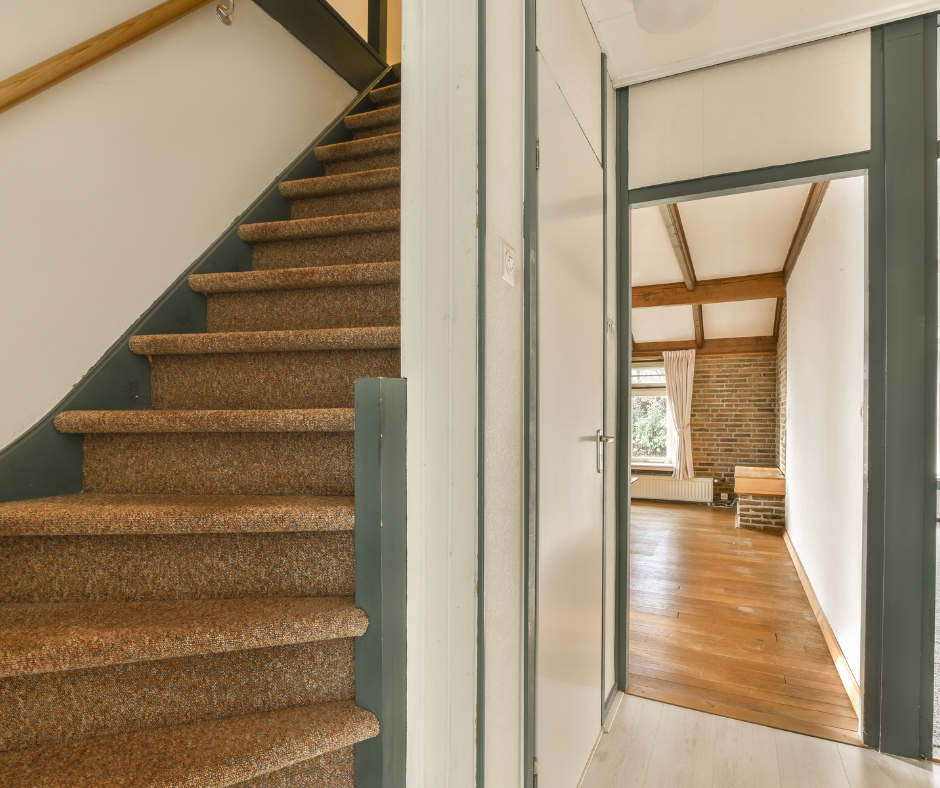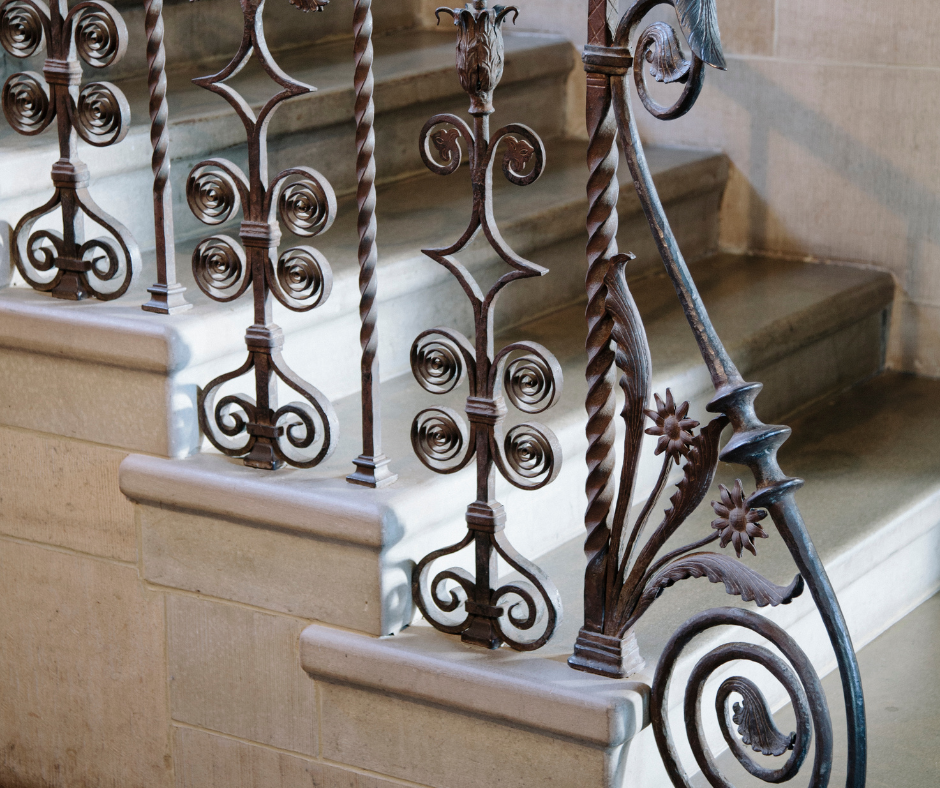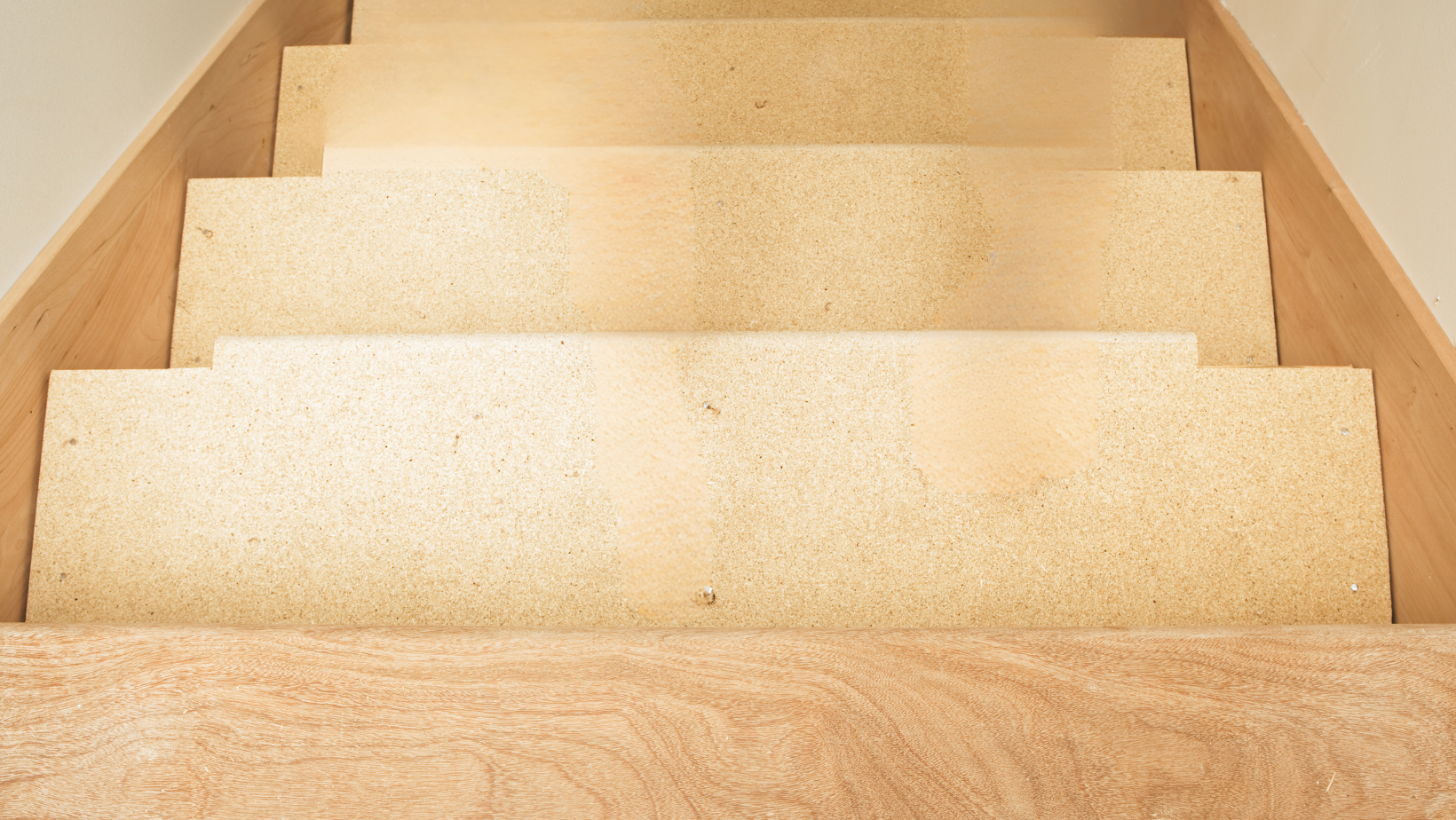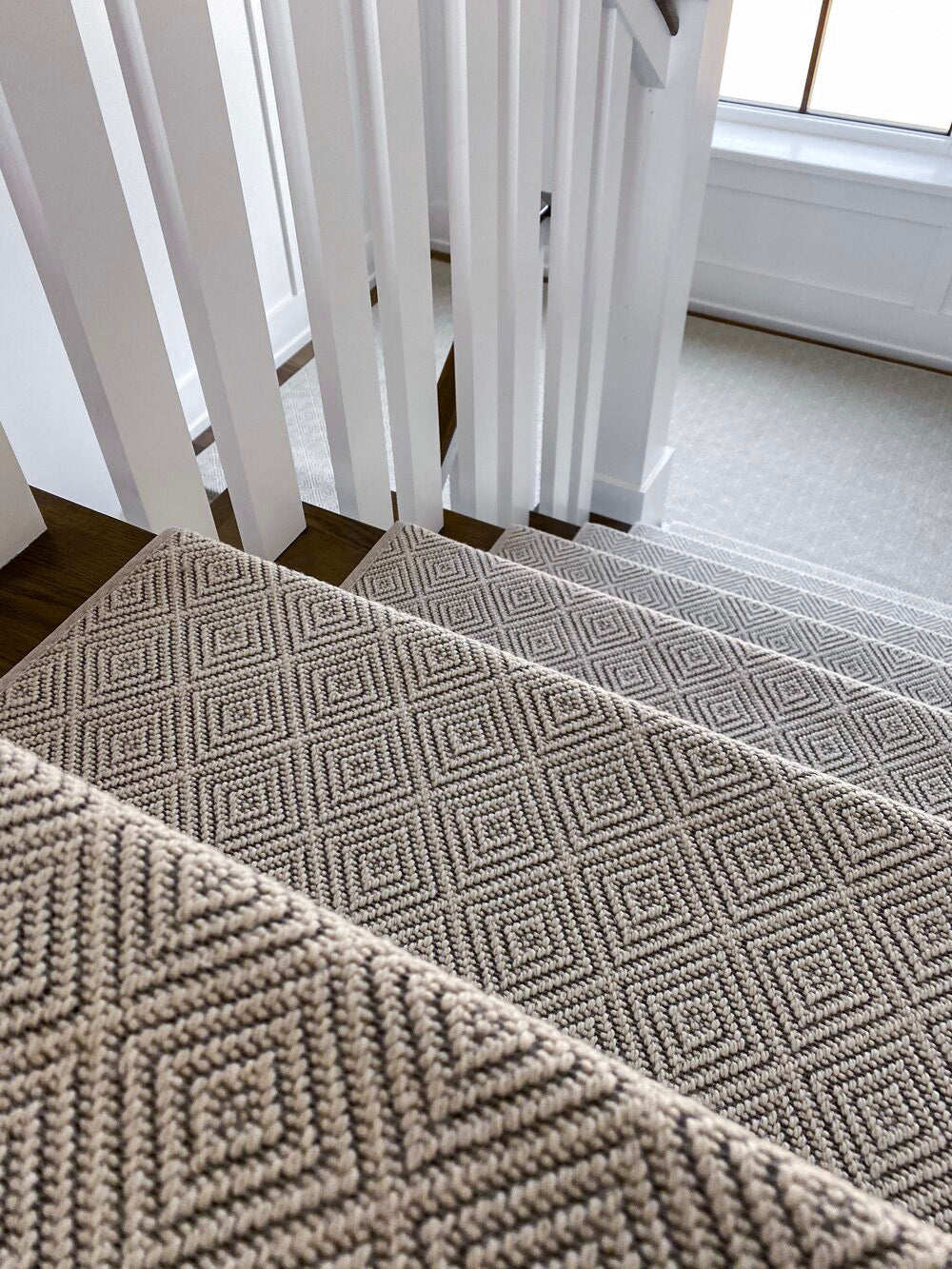Walking up a staircase should feel safe, comfortable, and visually seamless.
Stair nosing dimensions typically range from 0.75 to 1.25 inches in overhang, with lengths matching the stair tread width, usually 36 to 60 inches, depending on residential or commercial use.
These precise measurements enhance safety by reducing trip hazards, improving footing, and protecting stair edges from wear.
In this guide, you’ll learn the exact stair nosing standards, why they matter, and how to ensure compliance with building codes.
Whether you're upgrading a home staircase with options like carpet stair treads for added comfort and safety, or designing commercial stairs, understanding proper nosing dimensions will help create a safer, more durable, and aesthetically pleasing staircase.
What Is the Standard Size of Stair Nosing?
Standard stair nosing sizes range from 0.75 to 1.25 inches.
This measurement refers to how far the nosing extends past the edge of the stair tread.
Getting this size right is important for safety and compliance with building codes.
Building codes ensure that stairs are safe and accessible, reducing potential hazards in homes and commercial spaces.
The correct size nosing also improves balance and stability, especially for children and elderly individuals.
How Far Should Stair Nosing Stick Out?
The ideal stair nosing overhang falls between 0.75 and 1.25 inches.
This extra space gives better footing, reduces slips, and improves overall stair safety.
However, too much overhang can be a tripping hazard, so it’s important to stay within the recommended range.
An overhang that is too short may fail to provide enough surface area for the foot, leading to potential missteps.
Proper overhang placement also protects the stair edges, preventing chipping or damage over time.
What Is Bullnose Depth?
Bullnose depth refers to the rounded front edge of the stair nosing.
This smooth, curved design gives the stairs a softer, polished look while also improving safety.
Typically, bullnose depth is the same size as standard stair nosing, ensuring a seamless finish.
This design is particularly useful for reducing sharp edges, making stairs safer for homes with kids or pets.
In commercial settings, bullnose edges add a professional and high-end touch to staircases while maintaining compliance with safety regulations.
What Is the Length of a Nosing?
The length of stair nosing matches the width of the stair tread.
For most residential stairs, this is between 36 and 42 inches wide.
For commercial staircases, the width can range from 44 to 60 inches.
The nosing should run the full width of each step to create a uniform, supportive surface.
This ensures that anyone using the stairs has consistent footing, reducing the risk of slipping on different parts of the step.
Additionally, a properly sized nosing helps with aesthetic continuity, making the staircase look sleek and well-designed.
What Is the Minimum Overhang for a Nosing?
The minimum overhang for stair nosing is 0.75 inches.
This allows enough space for your foot to grip the step safely.
A nosing that extends more than 1.25 inches can cause trips, so keeping it within the standard range is best.
This is especially important for commercial spaces, where stair dimensions need to accommodate a wider range of foot sizes and walking habits.
An overhang that is too short may also cause discomfort, as it does not provide enough surface for stable footing.
Why Nosing Dimensions Matter
Getting stair nosing dimensions right is about more than looks—it’s about safety and function.
Proper nosing reduces the risk of falls, improves footing, and ensures building code compliance.
It also gives staircases a professional, polished finish, making them safer and more visually appealing.
For businesses, correct stair nosing ensures compliance with ADA (Americans with Disabilities Act) guidelines, helping to accommodate individuals with mobility challenges.
Additionally, well-designed stair nosing can increase property value, as it signals attention to detail and high-quality construction.
Stair Handrail Dimensions
Handrails are a critical safety feature for stairs.
The standard stair handrail height is between 34 and 38 inches above the stair tread.
For a comfortable grip, the diameter of the handrail should be between 1.25 and 2 inches.
Having a properly installed handrail ensures better balance and stability, especially for those who need extra support.
Handrails also serve as an important guide for visually impaired individuals, making staircases more accessible.
Handrails should be continuous along the staircase to provide consistent support without breaks.
Deck Stair Stringer Dimensions
Deck stair stringers provide structural support for stairs.
The standard rise (vertical height) of each step is 7.5 inches.
The standard run (horizontal depth) of each step is 10 inches.
These measurements create a stable, safe staircase for outdoor use.
In areas with frequent weather changes, it’s important to use durable materials like treated wood or composite to prevent deterioration.
Properly installed stair stringers ensure long-lasting strength, preventing sagging or instability over time.
How to Measure and Install Stair Nosing
Step 1: Measure the Tread Depth
Measure the depth of the stair tread, including any overhang.
The total depth should be between 0.75 and 1.25 inches to meet safety standards.
Using a laser level or measuring tape can help ensure precise measurements, preventing costly mistakes during installation.
Step 2: Cut the Nosing
Cut the nosing material to match the width of the stair tread.
Make sure the cut is even and smooth for a seamless installation.
For materials like wood or metal, using a high-quality saw blade ensures a clean, splinter-free edge.
Step 3: Attach the Nosing
Secure the stair nosing using screws or adhesive, ensuring it lines up evenly with the edge of the tread.
The nosing should extend uniformly across the entire step.
Consider using non-slip adhesives or textured coatings for additional safety, especially in areas prone to moisture.
Step 4: Check for Safety
Ensure the nosing is securely attached with no sharp edges or gaps.
A properly installed stair nosing reduces trip hazards and extends the lifespan of the stairs.
Performing a weight test by pressing down on the nosing can help verify that it’s firmly in place before full use.
Steps to Success
Choosing the right stair nosing dimensions ensures a safe, comfortable, and professional-looking staircase.
By following recommended sizing guidelines, you can create stairs that meet building codes and prevent slips and falls.
Whether for indoor or outdoor use, taking the time to get these dimensions right is worth the effort.
Stair nosing not only adds functionality but also serves as a design enhancement, making any staircase look polished and well-built.
Enhance Your Stairs with Safety, Style, and Comfort
Looking to improve the safety, comfort, and style of your staircase?
At Oak Valley Designs, we specialize in high-quality carpet stair treads, landings, and hallway runners that enhance both function and aesthetics.
Whether you're trying to reduce slips, protect your stairs from wear, or add a touch of luxury to your home, we have solutions tailored to your needs.
Our products are designed for easy installation, durability, and a seamless fit, ensuring your home looks beautiful while staying safe.
If you’re unsure where to start, our team is here to guide you through the process and help you find the best option for your space.
Contact us today to discuss your project:
-
Website: https://oakvalleydesigns.com/
-
Phone: 706.331.0315
-
Email: info@oakvalleydesigns.com
-
Address: 30 River Ct SW Bldg E, Cartersville, GA 30120




